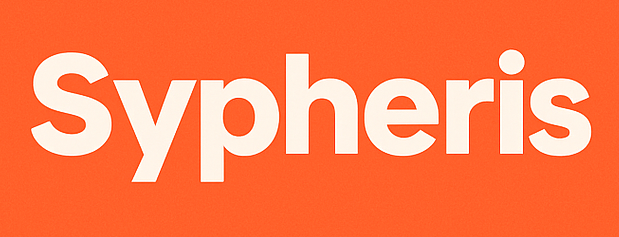In 2025, over 43 million federal student loan borrowers are bracing for a seismic shift as the Small Business Administration (SBA) takes over the $1.7 trillion student loan portfolio from the Department of Education. This unexpected move, announced by President Donald Trump on March 21, 2025, has sparked confusion and concern among borrowers already navigating a complex system. With the SBA facing a 43% workforce reduction and limited experience in student loan management, what does this mean for your loans? This blog post unpacks the SBA student loans 2025 transition, its potential impacts, and actionable steps to protect your financial future.
Why Is the SBA Taking Over Student Loans?
Background of the Transition
On March 21, 2025, President Trump announced that the SBA would “immediately” assume control of federal student loans, a portfolio previously managed by the Department of Education’s Office of Federal Student Aid (FSA). This decision aligns with an executive order to dismantle the Department of Education, redirecting its functions to other agencies. The SBA, led by Administrator Kelly Loeffler, is tasked with managing loans for approximately 43 million borrowers, despite its primary focus on small business support and disaster relief loans.
Legal and Logistical Challenges
The transition faces significant hurdles. Legal experts argue that moving the student loan portfolio requires Congressional approval, as the Higher Education Act of 1965 designates the Department of Education as the administrator of federal student loans. Without legislative action, the move could face legal challenges, creating uncertainty for borrowers. Additionally, the SBA’s announced 43% staff cut—approximately 2,700 jobs—raises concerns about its capacity to handle a portfolio larger than that of most U.S. banks.
Why This Matters to You
For borrowers, the shift could mean disruptions in loan servicing, payment processing, and access to programs like Public Service Loan Forgiveness (PSLF). With 20.5% of federal student loan borrowers already delinquent as of March 2025, any mismanagement could exacerbate financial strain. Understanding the transition’s implications is critical to staying ahead.
How Will Loan Servicers Be Affected?
Current Role of Servicers
Federal student loans are managed by private servicers like Navient and Nelnet, overseen by the FSA. These companies handle payments, customer service, and program applications. The transition to the SBA could alter how servicers operate, as the agency may introduce new protocols or contracts.
Potential Disruptions
Experts warn that the SBA’s lack of experience with student loans could lead to errors in payment processing or delays in customer service. Past servicer transitions have resulted in issues like incorrect loan balances or lost payment histories. With the SBA’s reduced workforce, borrowers may face longer wait times or inconsistent communication.
What to Watch For
Data Security: Consumer advocates have raised concerns about potential privacy risks during the transfer of sensitive borrower data.
Servicer Changes: The SBA may retain existing servicers or assign new ones, potentially affecting your point of contact.
Program Continuity: Programs like PSLF and income-driven repayment (IDR) are legally protected, but administrative errors could delay applications. Learn more about repayment plans (/repayment-plans) to stay informed.
What Should Borrowers Do Now?
Immediate Steps to Protect Your Loans
The uncertainty surrounding the SBA student loans 2025 transition makes proactive action essential. Here’s how to prepare:
- Check Your Loan Status: Log into StudentAid.gov to verify your loan balance, servicer, and payment status. Ensure your contact information is up to date.
- Download Payment History: Request a complete payment history from your servicer to safeguard against errors during the transition. This is especially critical for PSLF participants.
- Review Your Repayment Plan: Confirm your current plan (e.g., Standard, IDR) and assess its affordability. Use the Loan Simulator on StudentAid.gov to explore options. Visit our repayment plans guide (/repayment-plans) for details.
- Certify Employment for PSLF: If enrolled in PSLF, submit your Employment Certification Form now to document qualifying payments before any potential disruptions. See our forgiveness guide (/forgiveness-guide) for tips.
- Monitor Your Credit Report: Check for errors at AnnualCreditReport.com to ensure your loan status is accurately reported.
- Contact Your Servicer: Reach out with any questions or concerns, especially if you’re in default or forbearance.
Preparing for Potential Defaults
With 20.5% of borrowers delinquent and collections resuming in May 2025, default risks are high. If your loan is in default (270 days of non-payment), the SBA may initiate wage garnishment or tax refund offsets. To avoid this, consider loan rehabilitation or consolidation, detailed at StudentAid.gov/end-default.
What Could Change (and What Won’t)?
Loan Terms Remain Stable
The terms of your federal student loans—interest rates (e.g., 6.39% for Direct Unsubsidized Loans in 2024–25), repayment schedules, and forgiveness eligibility—are set by federal law and your Master Promissory Note. These cannot change solely due to the SBA takeover. For example, PSLF and IDR plans like the Saving on a Valuable Education (SAVE) plan are protected by statute, though administrative delays could affect processing.
Potential Operational Changes
While loan terms are fixed, the SBA’s management style could alter the borrower experience. The agency’s experience with programs like the Paycheck Protection Program suggests it may rely on private lenders, potentially resembling the discontinued Federal Family Education Loan (FFEL) program. This could streamline or complicate servicing, depending on implementation.
Impact on New Loans
It’s unclear how the SBA will handle new loan disbursements or the Free Application for Federal Student Aid (FAFSA). The Department of Education’s expertise in these areas may not easily transfer, potentially delaying aid for new students. Stay updated via StudentAid.gov.
FAQs About SBA Student Loans 2025
Will the SBA Change My Loan Terms?
No, your loan terms, including interest rates and repayment schedules, are set by federal law and your loan agreement. The SBA cannot unilaterally alter them. However, administrative errors could affect how your account is managed, so monitor your loans closely.
Can I Still Apply for Loan Forgiveness?
Yes, programs like PSLF and IDR forgiveness are protected by law. The SBA must continue these programs, though processing delays are possible. Visit our forgiveness guide (/forgiveness-guide) for application tips.
What Happens If I’m in Default?
If your loan is in default, the SBA may begin collections, including wage garnishment, starting May 5, 2025. You can avoid this by enrolling in rehabilitation or consolidation. Check options at StudentAid.gov/end-default.
How Do I Contact My Servicer During the Transition?
Find your servicer’s contact information on StudentAid.gov. Be prepared for longer response times due to potential staffing shortages at the SBA.
Will the SBA Manage Pell Grants?
It’s unclear whether Pell Grants will transfer to the SBA. The Department of Education currently oversees them, and no definitive plan has been announced.
How Can I Stay Informed?
Regularly check StudentAid.gov and reputable news sources like NPR and The Washington Post for updates on student loan changes 2025.
Long-Term Implications for Borrowers
Risk of Increased Defaults
Experts warn that the SBA’s inexperience and reduced staffing could lead to a spike in defaults, especially after the pandemic-era payment pause ended in October 2023 and the grace period lapsed in October 2024. With 30% of borrowers past due last year, proactive management is crucial.
Opportunities for Improvement
The SBA claims it will “restore accountability and integrity” to the loan system, citing its experience as the government’s largest guarantor of business loans. If implemented effectively, this could lead to better servicing. However, the agency’s 43% staff reduction raises doubts about its capacity.
Staying Financially Prepared
Review your budget to accommodate potential payment increases, especially if you’re on an IDR plan affected by recent changes to the SAVE plan. Use tools like the Loan Simulator on StudentAid.gov or consult a financial advisor to assess your cash flow. Our repayment plans guide (/repayment-plans) can help you choose the best option.
Conclusion
The SBA’s takeover of federal student loans in 2025 introduces uncertainty for 43 million borrowers, but your loan terms and rights remain protected by law. By checking your loan status, securing payment records, and staying informed through StudentAid.gov, you can navigate this transition with confidence. The road ahead may be rocky, but proactive steps will safeguard your financial stability. Subscribe to our newsletter for the latest updates on SBA student loans 2025 and expert tips to manage your debt effectively.



